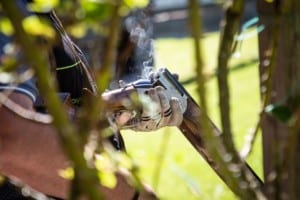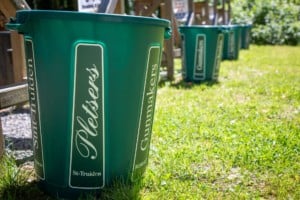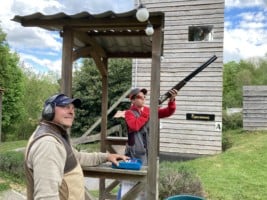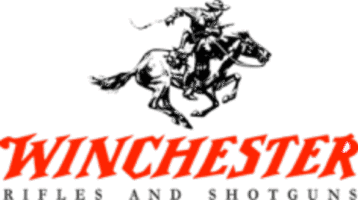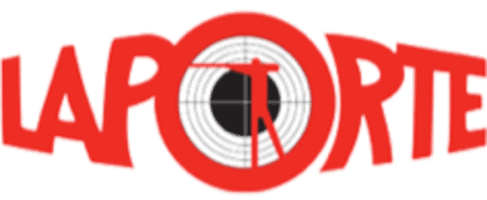Activities > Clay Shooting > Disciplines
At Chérimont Clay Shooting, you have the opportunity to try a variety of disciplines, both Olympic and non-Olympic.
Clayshooting (or ball-trap for our French neighbors), sometimes still called "clay pigeon shooting", is an outdoor activity that can be practiced at any age (from 16 years old, and from 14 years old for the Olympic disciplines) and which consists in shooting at moving targets (trays or clays) with a smooth-bore hunting weapon. It is a competitive or recreational sport, practiced mainly on permanent sites, but also on sites temporarily set up for this purpose.
The classic clay tray, black at the beginning, has become rather orange but there are brown, white, blue or green ones... It must have a diameter of 110 mm and weigh a maximum of 110 g. Special models also exist for the Hunting Course and the Compak Sporting called: mini, midi, battue, bourdon or rabbit.



Of the eight most important disciplines, three are Olympic: the Olympic Pit, the Olympic Skeet and the Double Trap. The other five are: the Universal Pit, the Hunting Course, the Compak Sporting, the Euro Pit (DTL) and the Propellers (ZZ).
For clays shooting, if visual acuity and physical condition are important, it is especially the mental strength which is determining. A single shot can make the difference between victory and defeat.
Hunting Course is a sport shooting discipline whose objective is to simulate shooting conditions similar to those found in small game hunting. This discipline uses all the possibilities of a field on which artificial targets of different types are thrown, in order to highlight the technical and sporting qualities of the participants.
The routes of the courses reproduce hunting trajectories: the run of a rabbit, the flight of partridges or woodcocks, the landing of a duck, the flight of a pheasant, the passage of a woodpigeon, ... All angles and speeds are allowed, taking into account the safety of all.
The shooting stations are generally represented on the ground by a square (1 meter side), a circle (1 meter diameter). A shooting line consists of 4 or 5 stations for a total of 25 clays.
The launchers are identified by a letter (A, B, C, ...) or by a number (1, 2, 3, ...) from left to right. The weight of the cartridges and the diameter of the shot are limited. The shooter shoulders at the sight of the tray and cannot anticipate it. There are different types of trays, from the smallest to the largest: the drone, the mini, the standard, the rabbit and the battue.
Shooting distance : between 10 and 60m
Anecdote
George Digweed, multiple world champion, shot 130 yards (118 m) in 2011


Compak Sporting is a "compacted" form of the Hunting Course. A group of maximum 6 shooters (5 active and 1 on standby), stand in a straight line, each on a square marked on the ground (1 meter side), raised by a safety device, and spaced 3 to 5 meters apart. In front of them is the "target area" which is a rectangle 40 meters wide by 25 meters deep and positioned 4 to 8 meters in front of the row of shooters.
There must be a minimum of six throwers. The location of the throwers is free provided that the thrown targets do not present any danger to the shooters, the referees, the staff and the spectators, even in case of No Bird. All the targets must fly over the rectangle ABCD at some point in their trajectory (see plan below).
The program includes fifteen single and five doubled targets or, to increase the difficulty, five single and ten doubled targets (shot, simultaneous or burst) for a total of 25 clays. The trays used are normal trays but also battue, rabbit, mini, drone, flash and possibly electro-targets.
Shooting distance : between 8 and 35 m
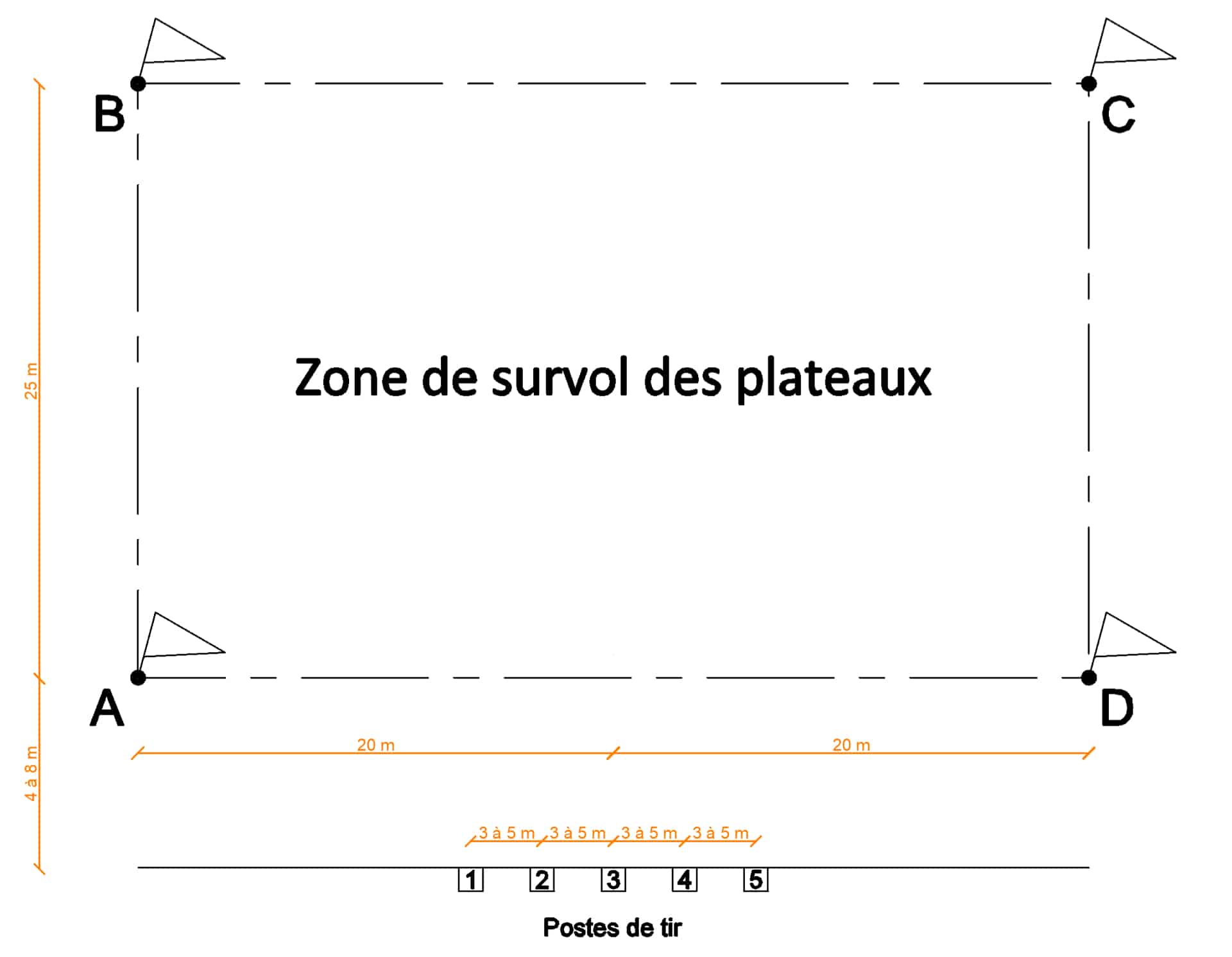
The Skeet is an Olympic discipline that is practiced on a course with two launching huts 40 meters apart. One, high, called PULL, the other, low, called MARK. From these huts, trays are launched with defined and constant trajectories.
Shooters move to seven equidistant shooting stations placed in an arc. The tray launch huts are located at each end of this arc. The first shooting station is located at the foot of the Pull hut and the seventh at the foot of the Mark hut. An eighth station is located in the center of the axis passing through the two huts.
The shooter is not allowed to shoulder before he/she sees the target(s). Participants shoot "singles" and "simultaneous doubles" in sets of 25 clays.
Shooting distance : between 8 and 35 m
Anecdote
During the Summer Olympics of 1992 in Barcelona, the Chinese Zhang Shan wins the title of the mixed event in front of seven men, by beating the world record of the event. From this date, the menu of the skeet is adapted (suppression of 4 simple trays and addition of 2 doubled) and the mixed events are replaced by separate events for the men and for the women.



The DTL consists of a launching machine placed in an elevated pit. The pit is built at a distance of 14.6 meters from the shooter.
Five firing points are distributed in a line at the back of the pit.
The launcher must be able to launch simple trays, within the limits of angle, height and distance (speed). The launcher is equipped with a device making the trajectories random and totally unpredictable.
The sending of the tray(s) can be triggered either manually or by a voice triggering device.
Shooting distance : between 15 and 50 m

Considered by some as the noblest discipline of clays shooting, it consists in shooting at propellers whose random flight approaches the flight of a pigeon. It is therefore much more difficult for the shooter to anticipate the trajectory of the propeller.
The propeller consists of a white disc, the "witness", mounted on a support equipped with two blades (generally orange). It is sent by a launcher which exerts beforehand a rotation on the disc by making it turn on itself (5.000 turns/min).
This discipline requires shooters to be very quick because, due to its unpredictable trajectory, the propeller must be hit as quickly as possible. The longer the shooter waits, the lower the chances of hitting the baton.
The shooting range representing a square of one meter by one meter is placed at a distance varying from 24 to 30 meters from the throwing devices. The witness placed on the propeller must fall in a circle of 21 meters in diameter having for center its launcher.
Shooting distance : between 24 and 51 m
Special feature The propeller is the only target that accelerates after leaving its launcher





Stay up to date with our activities, news, events and all those things that will make your life more exciting and bring you a good dose of unforgettable memories!
